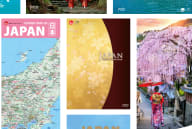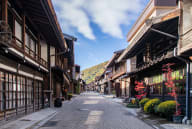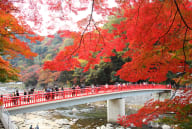
"The Jomon prehistoric sites in Northern Japan" are made up of 17 archaeological sites from northern Tohoku to southern Hokkaido. Recognized for their outstanding value, it was inscribed on the UNESCO World Cultural Heritage List in July 2021.
The Jomon period is a prehistoric era in Japan that spans from about 15,000 to 2,400 years ago. During that time period, the people led a sedentary lifestyle based on hunting, fishing, and gathering for more than 10,000 years, adapting to climate and marine changes.
There are multiple structures and settlements located throughout the expansive site, including burial areas, stone circles and ritual/ceremonial places. Shattered pottery and surviving archeological finds demonstrate the strong spirituality of the Jomon people.
The name 'Jomon' means 'straw rope decoration', referring to the patterns that were found imprinted on the pottery from that period. Items such as pots and clay tablets with faint depictions of feet, and goggle-eyed dogu figurines have been found near the ceremonial locations.
For more information, visit https://jomon-japan.jp/en/




































































